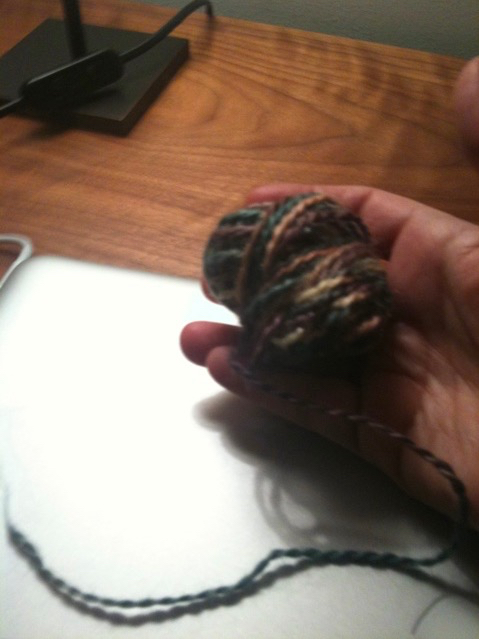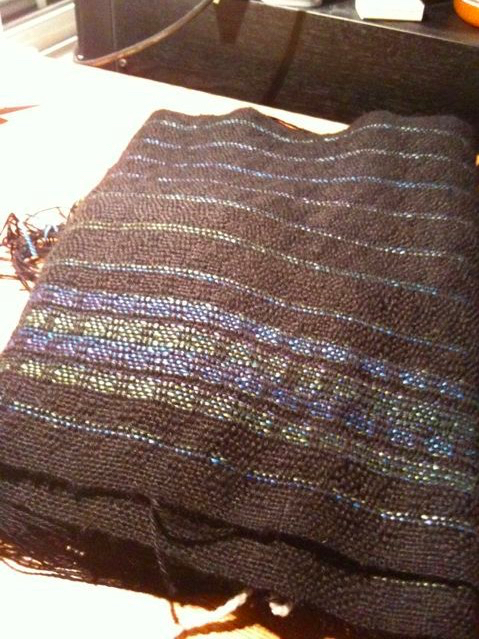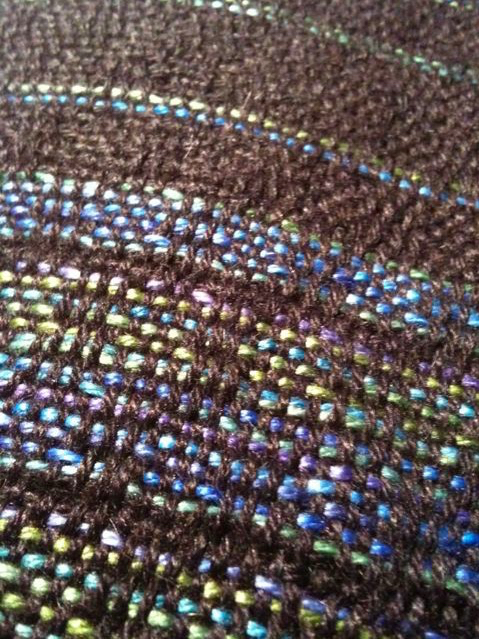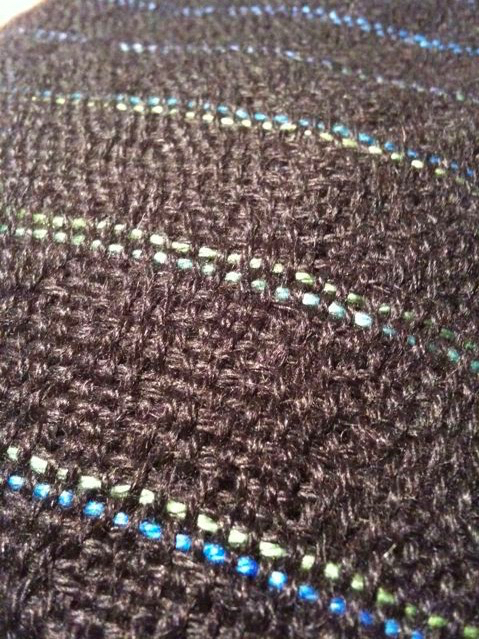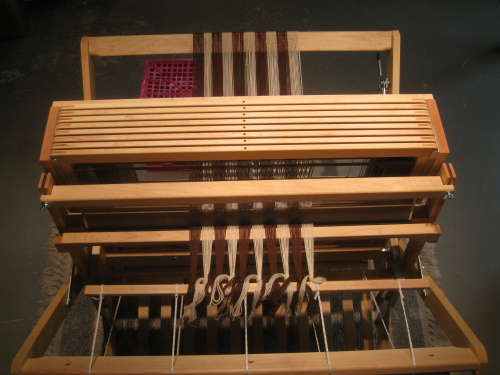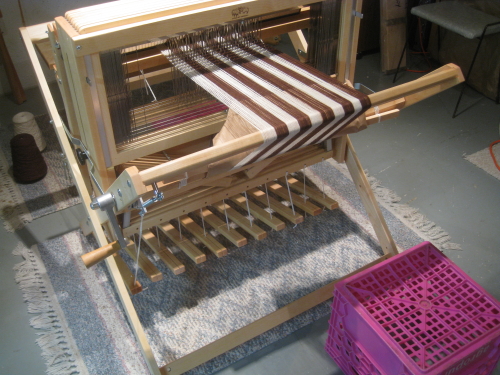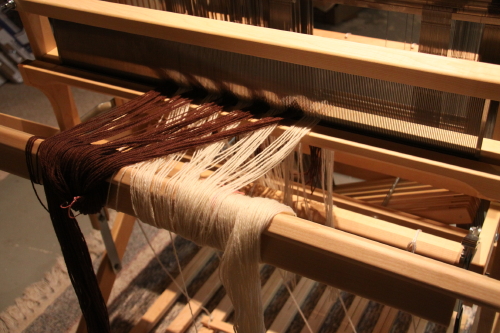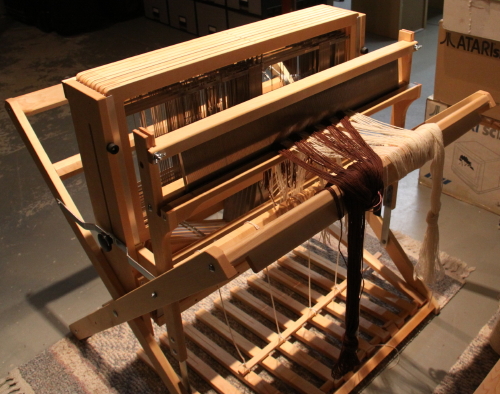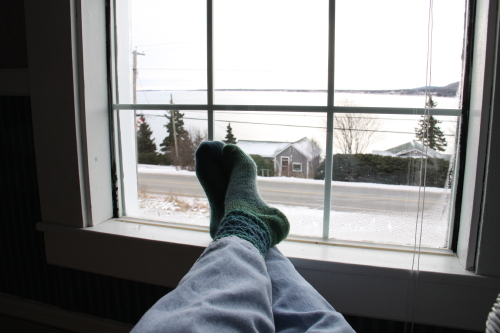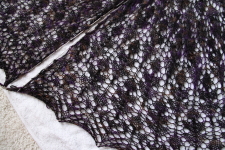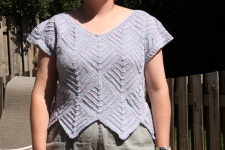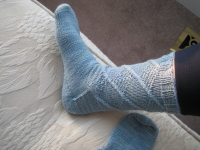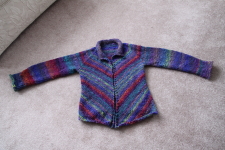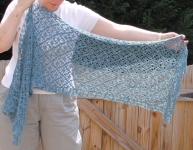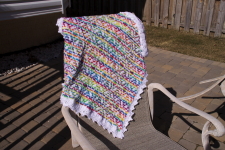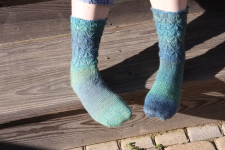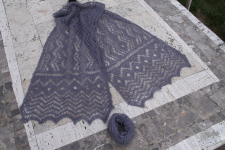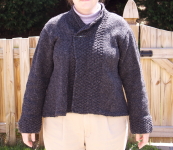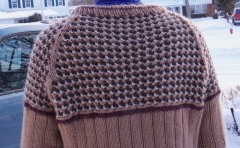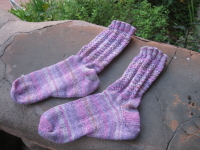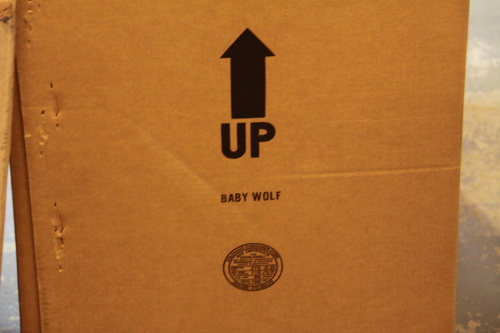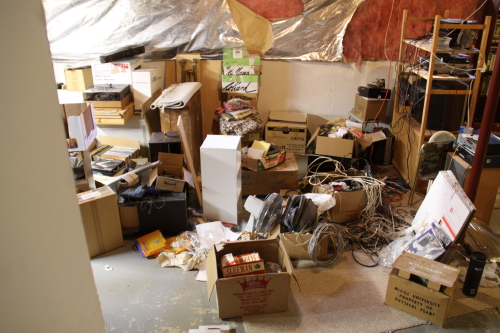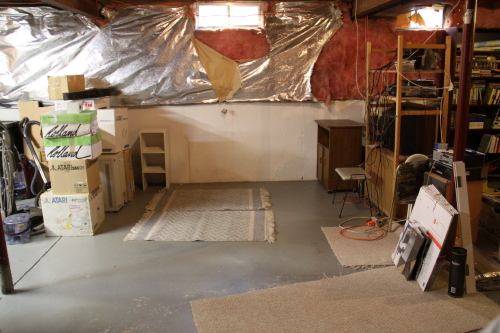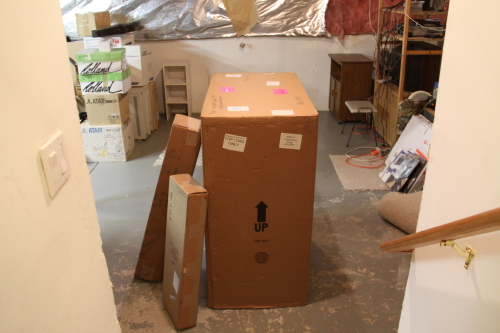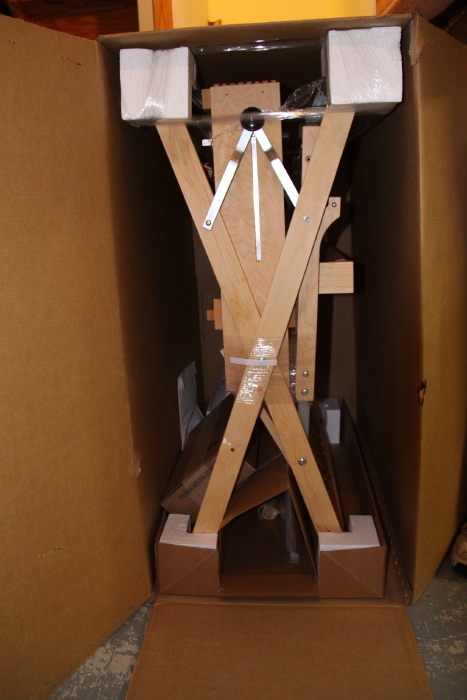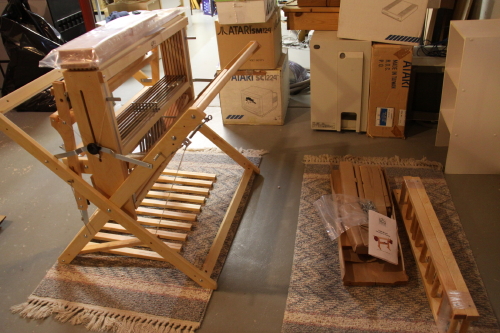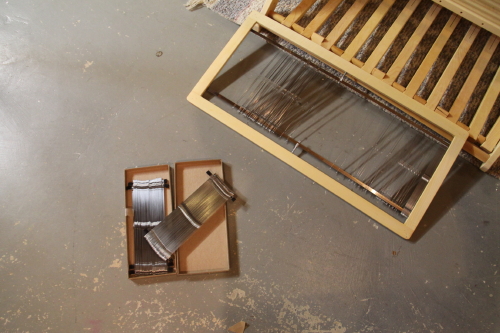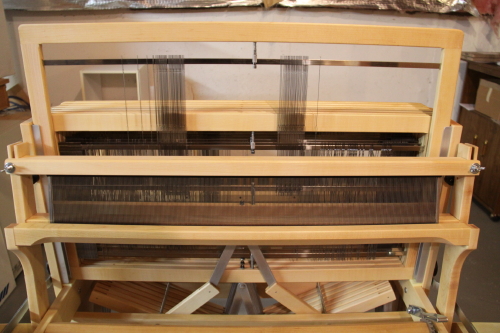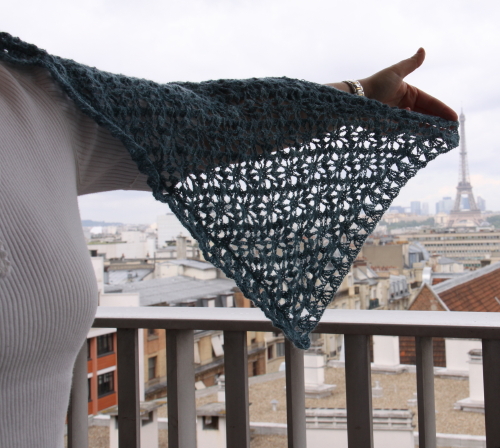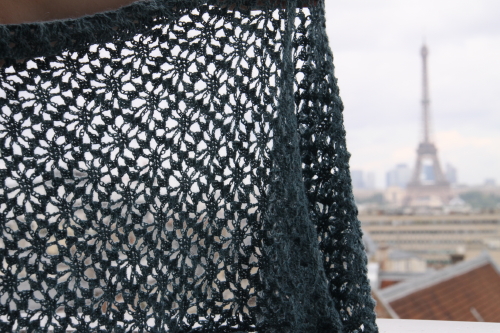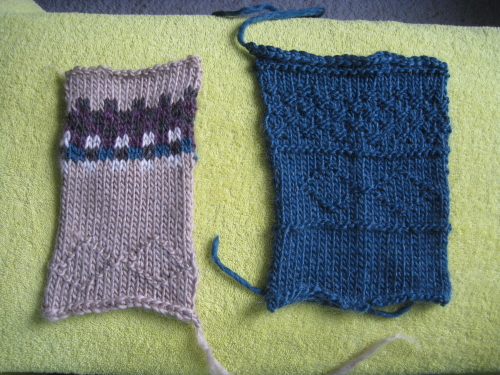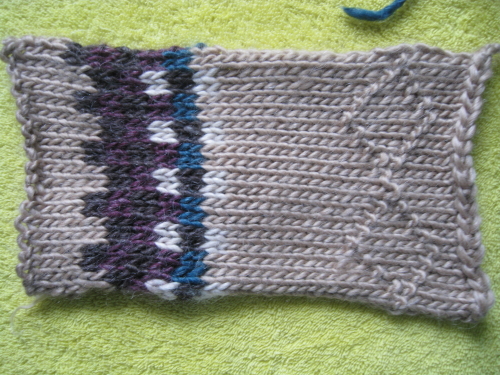And, weaving fun was had, for sure!
So, the first thing off the loom is not “a piece” or really even an “FO”. It’s just a sampler, warp that I filled with weft as I was playing around to get to know what this weaving thing is all about. I won’t even begin to discuss the challenge that is “selvages”.
Without further ado, here it is:

Perhaps worth noting — from this perspective, I began at the right and worked my way to the left, so that the final 2 sections of plain weave were what I did to fill up the warp as much as possible (to figure out how much waste I can expect with this loom). Not particularly visible in this photo, the selvages were becoming somewhat credible towards the end.
Per the instructions for the exercise, I put on a 2 yard (72″) warp. Less 7 1/2″ waste (fringe, below) at the front, and 14″ waste at the back, that gave me room to weave 45″ on this warp. (The other ~5″ were presumably lost to take up, as the warp and weft threads crossed). Post-wash, the worked length was 43″. I had set it for 10″ wide (120 ends, 12 dent reed). It ranged between 8 1/4″ and 9 1/2″ wide before washing, and shrank to 8″ – 9 1/4″ after washing. (The variations in width have to do with the different weave patterns (plain or twill), as well as the density of packing, through heavier beating).
Total time spent weaving… probably not more than a few hours. And, it was a lot of fun — very rhythmic, when it got going. It was easy enough with a simple treadling pattern to follow (1-2-3-4, or 1&3-2&4, for eg), but I really don’t know how I’ll do when it comes to more complex treadling. I envision having to learn the fine art of figuring out where I’ve gotten to and having to backtrack to work out mistakes :-/ The weaving equivalent of learning how to fall, I guess.
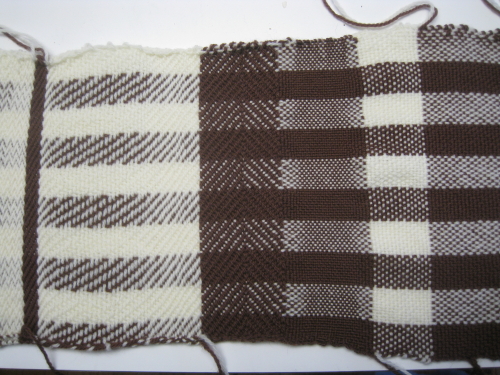
Above, from left to right — brown tightly packed (weft-dominant) 2x twill, white loose (warp-dominant) 2x twill, and some basic 2×2 twill making a herring bone pattern, followed by plain weave in various degrees of packedness (mostly intentionally 🙂 ).
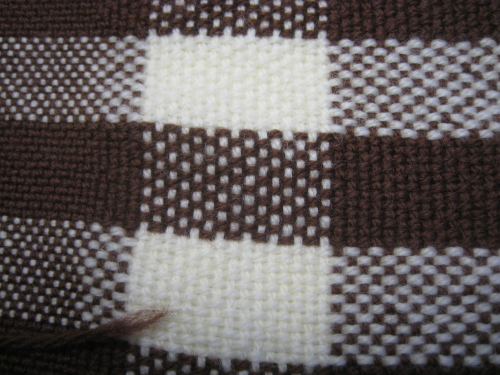
Closeup of plain weave — tightly packed at the right, loosely packed in the middle and left (white & brown weft, respectively).
So — there you have it: first thing off the loom! Next step — planning a project with a result I’ll want to keep…

